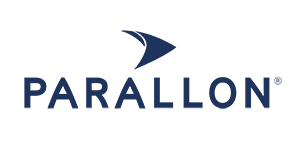Defining revenue integrity KPIs
Accuracy, productivity and reconciliation are three key KPI categories.
To develop successful revenue integrity programs, teams should pay close attention to key performance indicators (KPIs). Doing so can help them build on what’s working and change course when metrics warn of impending danger ahead.
A strong revenue integrity program can help revenue cycle departments preserve the margins that further the mission of delivering high-quality healthcare. Revenue integrity programs accomplish this by mitigating any inaccurate billing while also ensuring hospitals are not under-billing for services that have been delivered.
Thus, the desired goals of revenue integrity are focused on two key concerns:
- Lowering compliance risk
- Ensuring accuracy of charges
Revenue integrity managers should pay attention to coding and charging metrics, as well as revenue reconciliation metrics. These metrics can gauge how well people and processes are executing revenue integrity efforts and how successfully they are accomplishing desired goals.
Coding and charging accuracy
Coders convert the information contained in medical reports for procedures into accurate, usable medical code. It then
becomes the coding department’s
responsibility to ensure that the DRG codes accurately reflect patients’ conditions and the care delivered. Coding accuracy also takes into consideration information that is captured beyond DRG codes, such as operative and attending physicians, dates of procedures and disposition of the patient upon discharge.
The coding developed also helps create the superbill, an itemized form that details services provided to the patient that is then sent to the billing department. The billing department is responsible for ensuring the bill meets the regulations determined by the patient’s insurance.
Revenue integrity efforts examine all workflows in charging to determine the greatest efficiency and to identify patterns that need correcting. In order to monitor this closely, some of the most important KPIs include the following:
Overall coding accuracy. Coding managers or designees should look for accuracy rates of 95% from an individual record. They should expect higher accuracy for DRG coding. Poor coding accuracy can result in failed audits.
Missed charges. Revenue integrity should examine missed charge patterns. Missed charges mean lost payment. Sometimes these errors are caused by problems with the process or training. In some cases, they are caused by technology gaps.
Coding and charging productivity
Revenue integrity and coding managers are responsible for monitoring coding and charging accuracy. In addition to accuracy, claims need to be filed as soon as possible so that payer payments and patient billing can be handled quickly.
Two KPIs that revenue integrity managers should monitor, in particular, are the following:
Discharged, not final billed (DNFB). Claims that have not been filed and are waiting for coding or billing work are concerning to facilities. Tracking the number and dollar amount of DNFB files can enable a revenue integrity manager to diagnose and solve specific workflow issues.
Coding productivity. Throwing more coders at the system won’t help reduce the volume of coding if the real problem is with process or technology. Revenue integrity managers should expect coding productivity of 95%, which means that only 5% of the coding load should be in the queue.
3 revenue reconciliation KPIs
Information gleaned after coding and the submission of charges can reveal valuable insights to revenue integrity leaders. There are three KPIs, in particular, you should watch to determine how to address the problems in the revenue cycle:
1. Denial volume. Payer denials of claims can reveal process problems that occur at the coding, charging or billing level or even contracting concerns. Analyzing claim denial patterns can help the workflows that cause the submission errors. Keep an eye on denials percentages, as well as the dollar amounts from denied claims. Standard industry denial rates range from 5% to 10%, with 2% to 3% considered to be successful.
2. Avoidable write-off as a percentage of revenue. This KPI is typically tracked as a percentage of gross revenue and a percentage of net revenue. While there is an acceptable level of write-off to be expected, facilities look to limit this to 2% to 5% of net patient revenue.
3. Underpayment recoveries. Estimates are that hospitals are underpaid between 2% and 5% of net patient revenue (“Identifying and Collecting Underpayments: 7 Ways to Increase Your Success,” Becker’s Hospital CFO Report, Aug. 9, 2011). Revenue integrity should monitor underpayment levels and measure the success of efforts to recover those dollars.
These are just a sampling of the KPIs that revenue integrity leaders should monitor, but they are keys in identifying where compliance risks are high and payment is low. Altogether, these KPIs can help fix the problems that cause people, processes and platforms to underperform.
For more information, contact Parallon.






